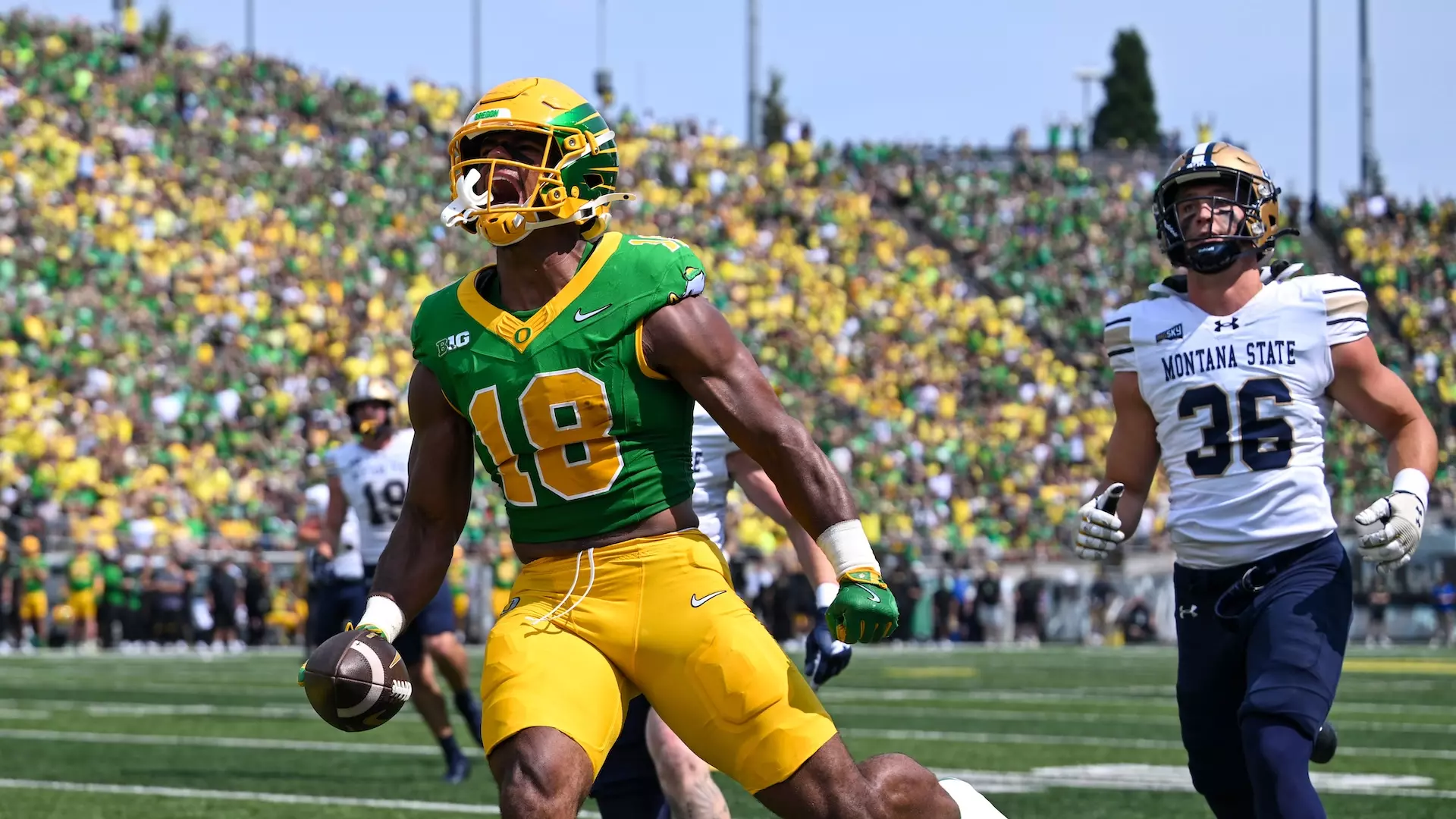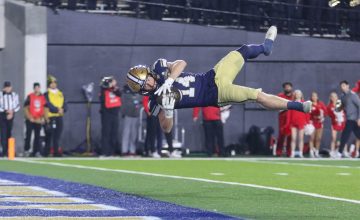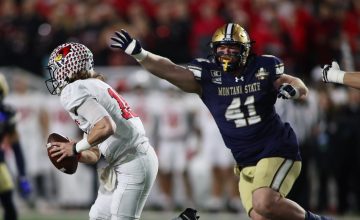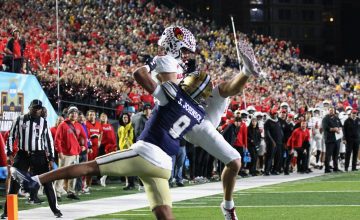EUGENE, Oregon — The Oregon Ducks have a football payroll that roughly equates to the entire athletic department budget for the Montana State Bobcats.
Sure, after the House settlement went through earlier this summer, schools are allowed to offer about $23 million a piece in roster subsidization. But you include booster and third-party Name, Image & Likeness money, and financial distribution abilities for UO are profound. Montana State’s athletic department operates on a budget of between roughly $26 and $28 million annually.
Oregon has made a habit out of playing Big Sky Conference teams lately. It’s almost like a subsidization initiative for the league’s lesser football programs, although the Bobcats, winners of two of the last three league titles, are hardly lesser in the BSC ecosystem.
Montana State is the fourth straight team from the FCS power conference to make the trip to Autzen Stadium in as many years. Outside of last season’s 24-14 escape against Idaho, the Ducks have averaged exactly 70 points per game in wins over Eastern Washington (70-14 in 2022), Portland State (81-7 in 2023) and Saturday’s 59-13 decision against the Bobcats.
The Ducks have been one of the powers of the West Coast for years. After USC took a step back following the Trojan dynasty built by Pete Carroll, Oregon assumed the position as kings of the Pac 12.
After moving into the Big Ten, the Ducks knew their glitzy style would need some substance. Enter Dan Lanning, a 39-year-old Kirby Smart disciple who is widely considered one of the great defensive minds in college football.

Oregon still has plenty of juice offensively. Dante Moore made his first career start on Saturday but he was hardly an unknown commodity. He came to Eugene as the No. 2 quarterback recruit in the country, a player faced with the task of replacing the two most experienced quarterbacks in college football history. Bo Nix now is the starter for the Denver Broncos while Dillon Gabriel is a backup for the Cleveland Browns.
It’s the Ducks’ defensive speed, ability to overload the wide side of the field and newfound physically aggressive mentality that has them as more than just a flashy West Coast sideshow. Instead, the Ducks are a true national championship contender.
That newfound sharpness defensively is what is leading the Ducks during the Lanning era, a stretch that has seen Oregon win 37 games in 43 contests, including 13 straight to start last season before getting bounced by eventual national champion Ohio State in the College Football Playoff.
“Beyond being super talented, they are a well-coached outfit,” Montana State head coach Brent Vigen said following the game. “You don’t go undefeated in the regular season and win Big Ten without all the pieces. They are a high-operating machine.”
The first of many “oh wow, there’s the talent gap” moments on Saturday came when stud tight end Kenyon Sadiq trucked aggressive yet youthful Montana State cornerback Carson Williams for the second of Oregon’s eight touchdowns. Williams is a superb athlete. He ran 11.09 in the 100 meters in high school and also ran under 22 seconds in the 200 while prepping in Houston.
Pretty much every player who touched the ball Saturday for the Ducks is as fast. Sadiq ran 11.45 seconds in the 100 meters in high school in, of all places, Idaho Falls, Idaho. He’s 6-foot-3 and 245 pounds and is projected to be the first tight end taken in next season’s NFL Draft.
“On a talent scale, I think they match anybody in the country,” Vigen said. “That’s big talent, long, small talent, quickness, explosion. We needed them to probably be a little off to be able to gain traction that you need.”
It’s nothing new for Oregon to have talent. In 2019, the last time Skyline Sports came to Autzen, the Ducks soundly beat Montana 35-3. That UO team was quarterbacked by Justin Herbert, the future No. 6 pick in the NFL Draft, and Kayvon Thibodeaux, a former national high school player of the year who went on to be the No. 5 overall pick by the New York Giants in the 2022 draft, led the charge defensively.
The differences now center upon the sheer number of elite players on Oregon (and likely the rest of the Top 12-15 teams in the FBS) have compared to the rest of college football. Basically every player that’s playing for a Power 4 conference team is getting paid some form of NIL stipend or roster stipend. That’s particularly true at UO, a school with one of the most prominent (and richest) boosters in all of college sports in Nike co-founder Phil Knight.
Last June, several national outlets reported that Knight, 86, is desperate to see Oregon win a national championship in football during his lifetime and is willing to supply “unlimited” NIL funds. Over the last two years, Oregon has had consecutive transfer portal recruiting groups that ranked No. 2 in the country. Oregon’s non-transfer portal recruiting classes have ranked No. 4 and No. 1 since Knight opened up the check book.
Oregon’s Class of 2025 included 12 four-star recruits and three five-star recruits. Several insiders have reported that Oregon’s rough roster “salary” is between $25 and $30 million.
So when Moore threw his third touchdown of the day midway through the third quarter to put the Ducks up 45-6 and Lanning decided to put in his second string on both sides of the ball, the talent gap did not move. In the olden (and golden) days of college football, Oregon would’ve still been significantly more talented than Montana State deep into the depth chart. But when the Ducks’ backups entered the game, you would see a more even level of talent considering the Bobcats went 15-1 last season and played for the FCS national title.
Instead, Oregon’s second string marched up and down the field at will. By the time freshman Jordon Davison (the No. 1 running back recruit in California and the No. 5 RB recruit in the country) scored his second touchdown, UO had mostly its second and third strings in. And the gap looked exactly the same.
Davison’s second score came with 6:50 left in the game and mercifully ended the scoring barrage. The Ducks rolled up 506 yards of total offense and 29 first downs. UO scored on its first nine offensive possessions. The lone non-touchdown came after blocking a punt. The Bobcats held UO to a field goal, but that chip shot put the hosts up 17-0 less than nine minutes into the game.
The 59 points allowed is actually only tied for the 14th most in MSU school history. The 46-point deficit was the largest since MSU lost 69-10 at Kansas State to open the 2008 season.
“You wondered if they will be motivated. They were clearly motivated today,” Vigen said of the Ducks.
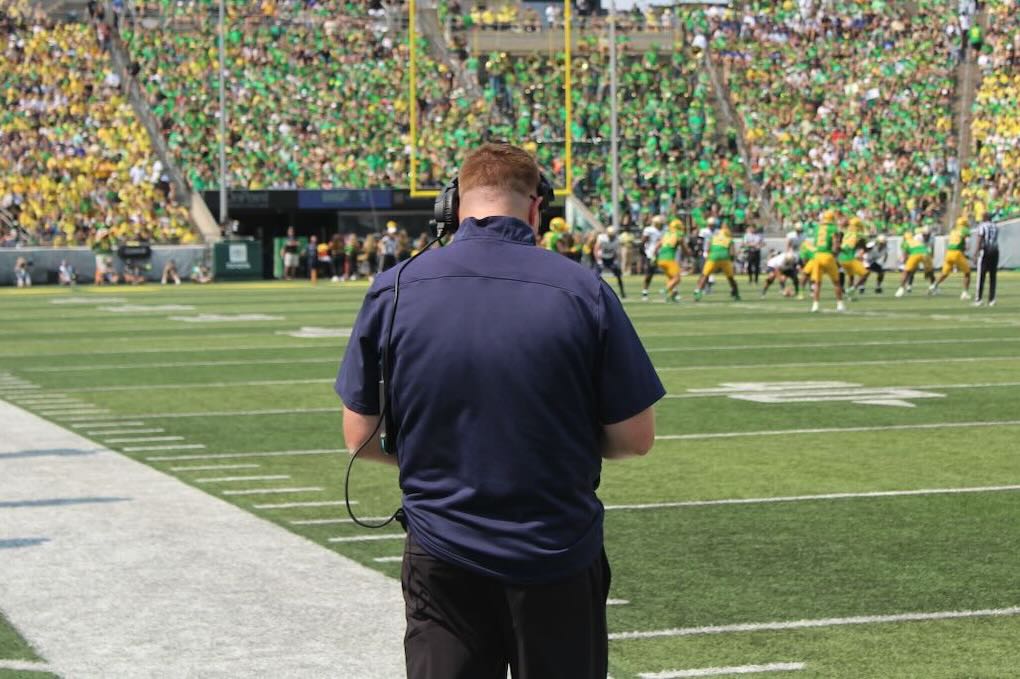
None of this financial analysis is to make excuses for the Bobcats. Montana State tackled only marginally well and its young secondary had a hard time settling into the physicality of the game on Saturday. MSU’s formative run game has been able to churn up yards against basically every team its played in the post-pandemic era. But Tommy Mellott is not the trigger man anymore and many of the spread option deception that has made MSU’s scheme so tough go prepare for might not be in the cards with Justin Lamson at the helm.
Montana State is expected to have one of the offensive and defensive lines in the Big Sky and the FCS this season. Neither side stood out on Saturday. The offensive line had a last-minute reshuffle with Burke Mastel breaking his hand, causing senior captain JT Reed to slide to center, All-American right tackle Titan Fleishmann to slide inside to guard, sophomore Cedric Jefferson to flip from left tackle to right tackle and redshirt freshman Braden Zimmer to make his first career start in front of a sellout crowd of more than 54,000 at one of the most intimidating venues in college football. That group held up decently well against Oregon’s pass rush (the Ducks notched three sacks) but couldn’t spark anything in the run game as MSU averaged just 1.7 yards per carry.
The analysis of the trenches is perhaps the greatest microcosm of what Saturday’s result proved or did not prove. Oregon has three offensive lineman and two defensive linemen that are projected to be NFL Draft picks next spring or the following year. The Ducks had 10 players drafted last spring alone; the entire Football Championship Subdivision had eight. Oregon had more players drafted last season than Montana State has had in the last 30 years.
How do you evaluate when the gap is so steep? Only one time has an FCS team beaten an FBS team ranked in the Top 10: when Appalachian State won at No. 5 Michigan in 2007. Almost two decades later, the difference between the best in the FBS and the best in the FCS has grown exponentially.
MSU lost more than two dozen seniors from a team that set an array of school records last season. The national narrative for Montana State has centered upon if the Bobcats will take a huge step back in the post Mellott era. Despite Saturday’s beat down, the answer to that question remains completely unknown.
Montana State’s run game looked pedestrian on Saturday as the mustered just 46 yards on the ground. Lamson looked tough and competitive, but lacked the acceleration that helped Mellott get Montana State out of so many messes over the last four years. The former Stanford transfer completely 23-of-31 passes for 198 yards in his first start for the Bobcats.

“First of all, Justin is a competitor and we can go places with that,” Vigen said. “I thought he stood in there a few times and made decisions. He didn’t get out and run much but he’s athletic at the same time. Same thing, that’s an athletic bunch he’s trying to run away from. I definitely think we have something in Justin.
The offensive and defensive lines looked over matched, but so will most teams that play against the Ducks this year. The Bobcats gave up 29 first downs but no plays of over 35 yards. The Ducks rushed for 253 yards, but 6.5 yards per carry actually seems respectable given the gap in talent and the fact that Montana State lost two starters (safety Taki Uluilakepa and inside linebacker Neil Daily) in the first half and neither returned.
Caden Dowler, in his first substantial action in a few years, flew around and made up for Uluilakepa’s absence, rolling up 10 tackles. Cole Taylor, a sophomore from Great Falls, stepped up in Daily’s absence and looked formidable in his first extended action.
And Adam Jones scored a touchdown with 2:22 left helped Montana State cut the margin to less than 50. Jones was the last player to leave the Autzen turf for the Bobcats. He lingered on the field, soaking up the scene and even mingling with some Oregon fans, all of whom gave him “thatta boys” for his efforts despite the lopsided result.
Following the action, Taco Dowler said that Vigen told the team that it’s not about losses, it’s about lessons. Dowler, a former Montana Gatorade Player of the Year from Billings, was the brightest star for the Bobcats on an afternoon where many had a hard time shining. He caught 12 passes for 107 yards but was gobbled up by Oregon’s elite closing speed at all three levels defensively basically every time he got into space.
“Fastest team I’ve ever played. It is different,” Dowler said. “There are levels to this. We came to compete, but they are ridiculously athletic.”
Saturday’s loss is only the 11th under Vigen’s leadership since he took over ahead of the 2021 season. Three of those losses are to FBS opponents. The last time Montana State got lambasted like they did on Saturday came when the 2022 Bobcats lost 68-28 to Oregon State at Providence Park in Portland.
Vigen seemed shell-shocked after that result against OSU three years ago. Saturday, he displayed disappointment but was also realistic about what his team had just faced: a true national title contender that will threaten to win another Big Ten title and seems on the fast track to the College Football Playoff.
“That’s a team that is going to go places. For us, we got a lot of guys playing, playing for the first time and at minimum, I know we competed really well and played to the end,” Vigen said. “At the end of the day, games like this are great opportunities to compete against the very best. They are great opportunities to learn about yourself at the same time. What you learn is that you aren’t quite there but you hope along the way, you make a lot of plays to stay in a game like that. That didn’t happen to. But we have to learn from this, move on and get ready for next week.”

Montana State has now lost two straight games for the first time since 2023 when MSU got drilled 37-7 in Missoula against rival Montana before falling 35-34 in overtime to North Dakota State in the second round of the FCS playoffs. The loss to the Bison also marks the only time MSU has lost at home during the Vigen era.
Now MSU returns home but gets no rest for being weary. The Bobcats host South Dakota State, the No. 3 ranked team in the FCS who stands to move up after pounding Sac State 20-3 on Saturday evening in Brookings.
The Jackrabbits won the national title in 2022 and 2023 before advancing to the semifinals last season. SDSU is under the direction of first-year head coach Dan Jackson and must replace 16 players who followed former head coach Jimmy Rogers to Washington State. The Jacks looked stout and aggressive against the Hornets. But it’s unlikely the Bobcats will see anything like what they saw in Eugene on Saturday again this season.
“The game didn’t go the way we wanted it to but we played a great team,” MSU senior defensive lineman Alec Eckert said. “Coach Lanning has done a great job. We gave them a few inches and they took more than that.
“This game is over with and done and we have to learn from it but also move on. I know one thing for sure – we are going to fight through adversity and be ready for next week.”


